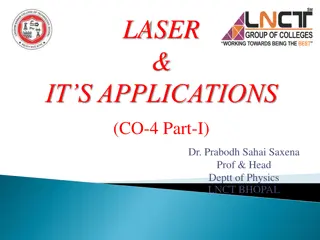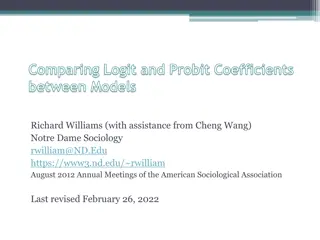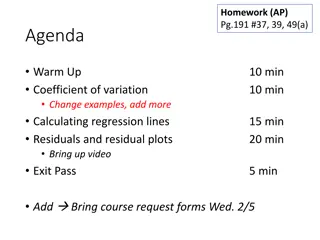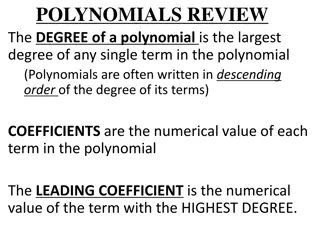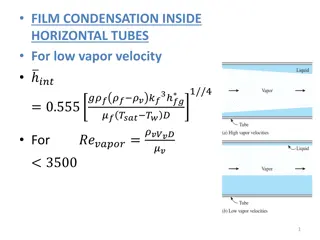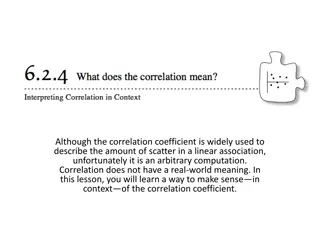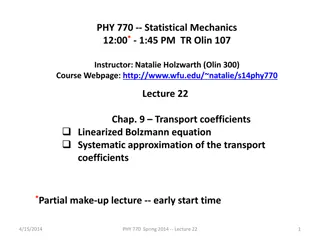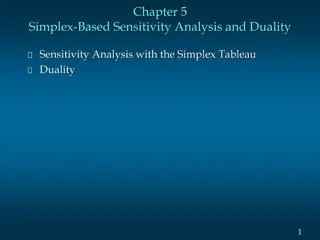
Understanding Time-Varying Coefficients in Statistical Modeling
Explore the concept of time-varying coefficients in statistical modeling, where coefficients change with time to capture dynamic relationships between variables. Learn how these coefficients impact trend estimates and relationships, illustrated through examples and plots.
Download Presentation

Please find below an Image/Link to download the presentation.
The content on the website is provided AS IS for your information and personal use only. It may not be sold, licensed, or shared on other websites without obtaining consent from the author. If you encounter any issues during the download, it is possible that the publisher has removed the file from their server.
You are allowed to download the files provided on this website for personal or commercial use, subject to the condition that they are used lawfully. All files are the property of their respective owners.
The content on the website is provided AS IS for your information and personal use only. It may not be sold, licensed, or shared on other websites without obtaining consent from the author.
E N D
Presentation Transcript
Time-varying coefficients models Claudia von Br mssen Dept of Energy and Techology
What are time-varying coefficients? We have already seen that we let trend estimates vary with season. 3 3 s(datenr,1.79):Month13 s(datenr,1):Month14 2 2 We get new trend lines for each month. 1 1 0 0 -1 -1 1975 1985 1995 2005 1975 1985 1995 2005 datenr datenr But here the coefficients do not vary smoothly changing from one month to another, instead a new trend line is estimated for each month. 3 3 s(datenr,3.87):Month15 s(datenr,4.07):Month16 2 2 1 1 0 0 -1 -1 1975 1985 1995 2005 1975 1985 1995 2005 datenr datenr
What are time-varying coefficients? Example: Fyris n A strong downward trend, especially in the 1970s. 7 6 This is due to improvements in wastwater treatment. Total Phosphorus, log-transformed 5 4 1970 1980 1990 Date 2000 2010
What are time-varying coefficients? Example: Fyris n The relationship between river runoff and total phosphorus concentrations also changes with time. 7 6 Total Phosphorus, log-transformed Year 2010 During the 70s increased runoff leads to dilution = a negative relationship 2000 1990 5 1980 1970 Later increased runoff leads increased concentration = a positive relationship 4 0 1 2 3 4 River discharge, log-transformed
What are time-varying coefficients? Time constant relationships between concentration and runoff: 1965 -2013 1965-1984 1994-2013 1.0 1.0 0.6 0.6 1.0 1.0 0.5 0.5 0.4 0.4 s(logQ,2.69) s(logQ,4.49) s(logQ,3.28) s(time,8.33) s(time,5.61) 0.5 0.5 s(time,1) 0.0 0.0 0.2 0.2 0.0 0.0 0.0 0.0 -0.5 -0.5 -0.2 -0.2 -1.0 -1.0 -0.5 -0.5 12000 14000 16000 18000 0 1 2 3 4 0 5000 10000 15000 0 1 2 4000 3 4 0 2000 6000 1 2 3 4 time logQ time logQ time logQ
Fitting time-varying coefficients fyrismod1<-gam(logTP~ s(time)+s(time, by=logQ), data=river) The s(time) part estimates changes in intercept = changes in phosphorus concentrations at base flow. The s(time, by=logQ)models the linear relationship between phosphorus and runoff. ????? = ?? ???? but the linear regression coefficient changes smoothly with time.
Fitting time-varying coefficients Plotting the coefficient tillustrates how the concentration-runoff relationship changes with time. 0.2 Regression coefficient for log-transformed discharge 0.1 From a negative relationship before 1985 to a positive one after that. 0.0 -0.1 -0.2 -0.3 -0.4 -0.5 1970 1980 1990 2000 2010 Date
Fitting time-varying coefficients -1se +1se te( r,M nad,14.76):logQ fyrismod2<-gamm(logTP ~ s(time) + te(time,M nad, by=logQ) , data=river) 12 -0.1 -0.1 -0.4 -0.1 -0.2 -0.2 -0.2 -0.4 10 -0.5 0.2 8 We could also model varying-coefficients over both years and month. M nad 6 0.3 0.1 0.2 4 There we see that the high positive regression coefficients are observed mainly during summer and autumn month. 0.2 0.1 2 -0.3 0.1 -0.3 -0.3 0 0 0 1970 1980 1990 2000 2010 r
Open questions Estimating time varying regression coefficients leads to rather complex models, which easily can lead to non-convergence or other modelling problems. In all regression models estimates of intercept and regression coefficients are correlated. Since in out study the intercept changes with time this could have effects on the regression coefficient, even if the relationship between runoff and concentration is constant. The intercept is the level of concentrations when discharge is 0 and is here used as a proxy for base-flow. Base flow is, of course, never at 0 and can furthermore change with time as well.




